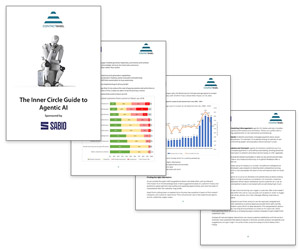Gary Pipes at Sabio asks what measures are you taking to track your online storefront?
A positive customer experience (CX) through your digital channels makes a huge difference to how people feel about your business. Most customers and prospects start their contact journey online and therefore it makes a lot of sense to optimise the online / contact centre “ecosystem” starting at the source using those digital channels.
While investments in digital have soared across most sectors, the retail industry has been at the forefront of digital transformation. In BearingPoint’s UK Digital Leaders Study 2021 Report, UK retail was ranked the top industry sector for digital maturity for the first time, with nine out of the top ten spots in the list held by retailers.
So, it is little surprise that in the past year the retail sector has been – and indeed continues to be – characterised by a dash to digital, with retailers seeking to react, adapt and evolve to ensure their survival and position themselves to capitalise on the “new normal”.
However, a recent study by the CMO Council suggests that nearly two-thirds (65%) of consumers feel that digital experiences do not exceed expectations, while Contact Babel’s The 2020-21 Customer Experience Decision-Makers’ Guide indicates that 65% of UK businesses have had operational issues which have impacted on customers during COVID-19.
With customer patience running out, retailers that are still relying on their quick-fix digital solutions, may begin to suffer.
Quoted within Genesys’ Future of Customer Experience within Retail research, Peter Dorrington, founder of XMplify Consulting, said: “Many businesses are still offering an inadequate customer experience through these new channels – and customers are beginning to voice their frustration with the laggards.
“History shows us that when there is a significant gap between the experience customers expect and what they actually receive, new competitors (and especially ‘disruptors’) quickly move in to fill the gap and take market share from existing suppliers.”
One of the main challenges to finessing the digital experience / online storefront is the fact that the majority of organisations are siloed with different targets and KPIs that are not always aligned, with limited ability to measure and improve customer journeys between digital channels and the contact centre.
In addition, in many cases there is an opinion-driven change process / culture which is often very slow. It is key to use unique data and insights that will create common understanding and alignment throughout the various customer organisations and lines of business.
However, it’s one thing to capture a whole wealth of useful data, but it’s another to make useable, strategic sense of it and, furthermore, communicate findings to your project working group and wider stakeholders in a meaningful and practical way.
CX software leaders and digital transformation specialists and consultative vendors should be working with their clients to improve their digital experience and reduce “digital leakage” that typically leads to voice calls into the business to complete a transaction, resulting in increased ‘cost to serve’ and also in many instances exposing the siloed operation and technologies in place.
By conducting a digital insights pilot – as we do at Sabio – organisations can increase self-service and thereby reduce unnecessary calls into the contact centre.
This process is relatively simple, and involves deploying our quantitative data gathering tool (a small JavaScript tag) and embedding it into our customer’s website, collecting a foundation of evidence on which those confident strategic business decisions can be made.
The output includes:
- Identifying the most common contact reasons among those visitors who don’t try to self-serve and match that with the corresponding Self-service Resolution rate. If done correctly, this can – as a minimum – drive at least an additional 10% of the visitors who currently don’t try to self-serve to use the self-service content and achieve the same Resolution rate.
- Identifying the self-service content with the lowest Resolution rate and highest volume. With the assumption being that the content can be improved and thereby increase the Resolution rate significantly.
This delivery process is designed to successfully create execution momentum and an appetite for improvements. The next-step ‘quick wins’ spark the execution momentum further and accelerate change and reduce calls.
For more information about Sabio - visit the Sabio Website
Call Centre Helper is not responsible for the content of these guest blog posts. The opinions expressed in this article are those of the author, and do not necessarily reflect those of Call Centre Helper.
Author: Sabio
Published On: 28th Sep 2021
Read more about - Guest Blogs, Sabio






 Sabio Group is a global digital customer experience (CX) transformation specialist with major operations in the UK (England and Scotland), Spain, France, Netherlands, Malaysia, Singapore, South Africa and India. Through its own technology, and that of world-class technology leaders such as Amazon Connect, Avaya, Genesys, Google Cloud, Salesforce, Twilio and Verint, Sabio helps organisations optimise their customer journeys by making better decisions across their multiple contact channels.
Sabio Group is a global digital customer experience (CX) transformation specialist with major operations in the UK (England and Scotland), Spain, France, Netherlands, Malaysia, Singapore, South Africa and India. Through its own technology, and that of world-class technology leaders such as Amazon Connect, Avaya, Genesys, Google Cloud, Salesforce, Twilio and Verint, Sabio helps organisations optimise their customer journeys by making better decisions across their multiple contact channels. 


































